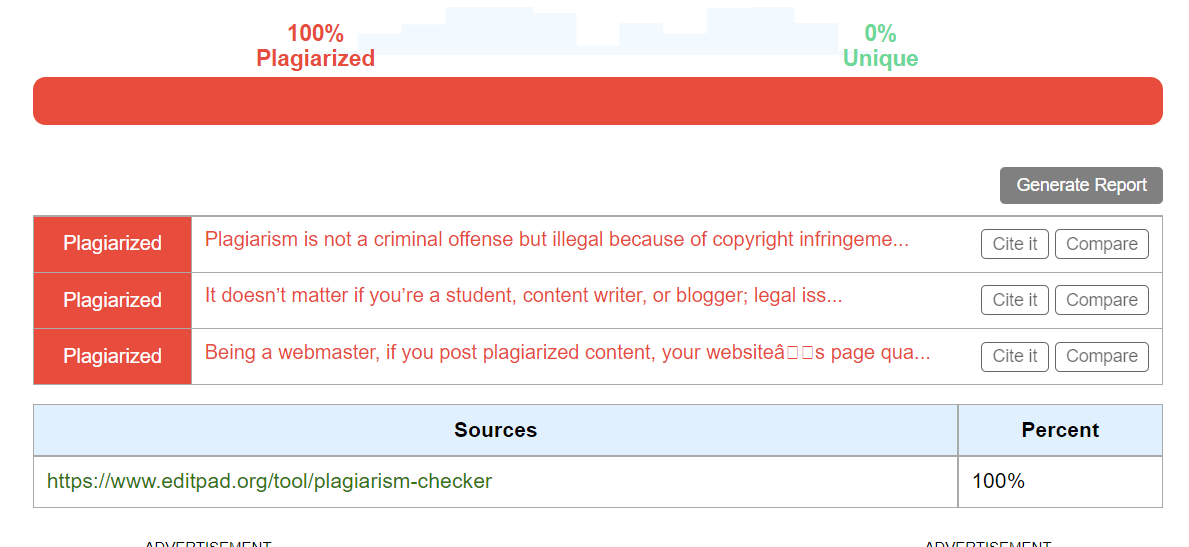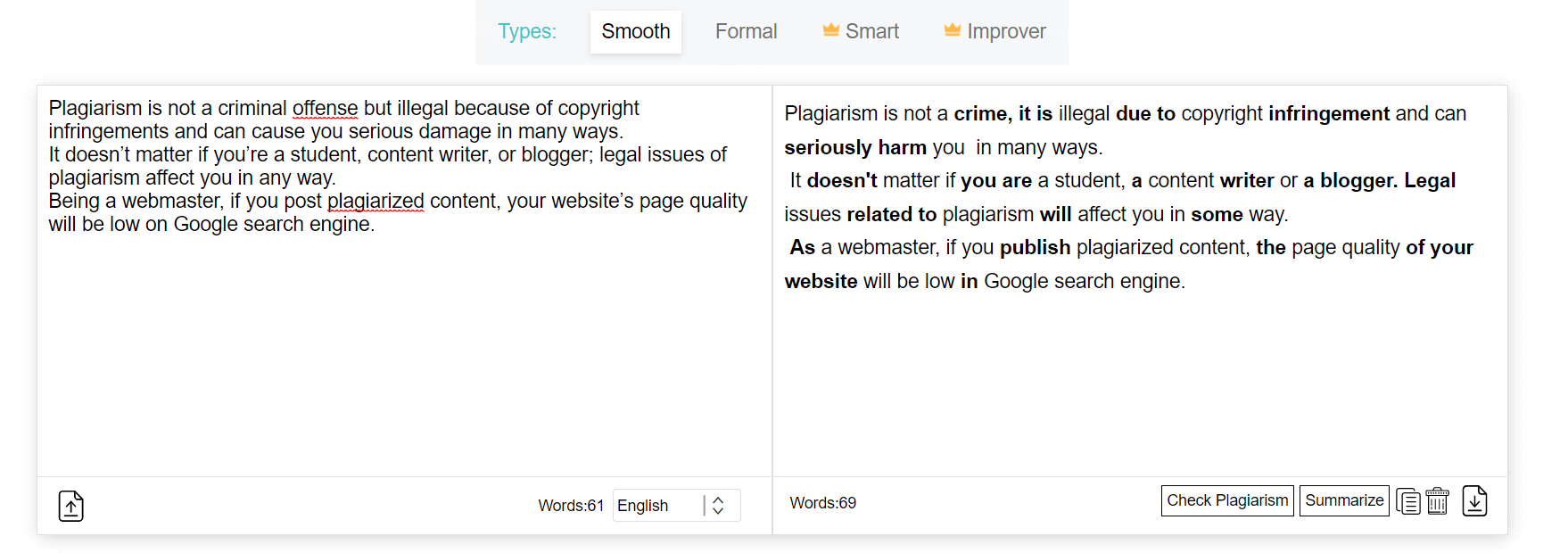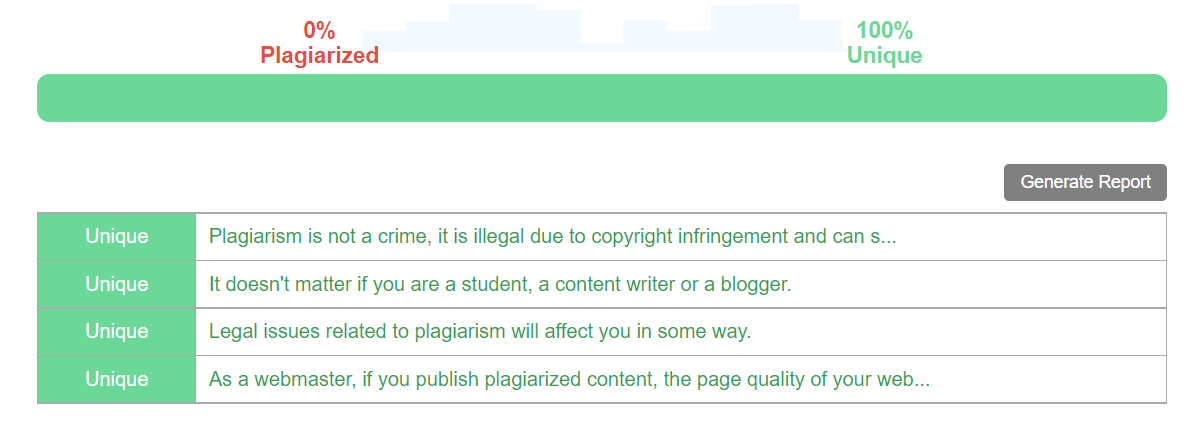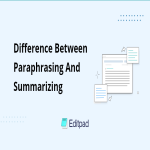Biggest Launch
Introducing Our New
API's
- Available Today
If you’re trying to learn more about paraphrasing, you’re at the right place. In this blog post, we’ll be talking about what paraphrasing is, how you can do it properly and how it can help you with your writing endeavors.
Since there are a lot of definitions that have been tendered by different online sources for explaining paraphrasing, we’ll borrow a couple of those before talking about our own version.
According to Merriam-Webster, the definition of “paraphrase” is:
“A restatement of a text, passage, or work giving the meaning in another form…”
According to CliffsNotes, the definition is thus:
“When you paraphrase something, you are using your own words to restate the meaning of an existing quote or piece of text…”
And lastly, Literary Terms puts the definition of “paraphrase” like this:
“A paraphrase (pronounced par-uh-freyz) is a restatement or rewording of a paragraph or text.”
Gleaning from the above, we can simply understand paraphrasing to mean “the act of rewording or restating an existing piece of text using different terms but with the same meaning as the original.”
The main condition that defines paraphrasing is adherence to the original meaning. In other words, when some text is paraphrased, it should retain the original meaning, otherwise, the changes won’t remain in the ambit of “paraphrasing”. They will simply be defined as “edits”.
Paraphrasing has a lot of different purposes. For the next part of this post, we will look at some of those:
Providing better clarity is a common use of paraphrasing. By rewording a statement or a passage, the speaker/writer can employ easier terms so that the meaning can be understood better.
This sort of paraphrasing is usually done in a mere sentence or two. It can be both verbal and written.
Here is an example:
“The ensuing cajoling made him acquiesce to the proposal. In other words, he accepted the proposal after being persuaded.”
In the above quote, the bold text is the paraphrased version of the first sentence. The first sentence has some difficult words in it, such as “cajoling”, “ensuing” and “acquiesce”. But, in the paraphrased version, you can see that all of those words are replaced with easier synonyms like “persuade” and “accept”.
Another use of paraphrasing is achieving better brevity and conciseness. If a particular sentence or passage is too long, you can try paraphrasing it in order to shorten its length while retaining the original meaning.
Here is an example of what this looks like:
Original Version: “His behavior was embarrassing, the way he submissively obeyed him, cap in hand.”
Paraphrased Version: “His obsequious behavior was embarrassing.”
In the example above, the original text is 13 words long whereas the paraphrased version only consists of five words. The meaning of both, however, is the same.
This is yet another good use of paraphrasing tools. You can use them to make your content unique and free from accidental plagiarism.
Let’s actually elaborate on this in some detail:
When creating content, a lot of content writers can face the issue of accidental plagiarism. Accidental plagiarism occurs when a writer unknowingly comes up with such a sentence or passage that exists, in that same exact form, on some existing online source.
If, after writing a draft, a writer finds out that a certain portion of their work is plagiarized, they can simply paraphrase it. That way, the exact match, and replication will be removed and their content will be rendered unique.
Here is an example of what this looks like. For the purpose of this example, we will pick some text from our own website and run it through our plagiarism checker. These are the lines that we’re going to be using:
Plagiarism is not a criminal offense but illegal because of copyright infringements and can cause you serious damage in many ways.
It doesn’t matter if you’re a student, content writer, or blogger; legal issues of plagiarism affect you in any way.
Being a webmaster, if you post plagiarized content, your website’s page quality will be low on Google search engine.
As you can see in the image below, this passage is coming back as 100% plagiarized, which is pretty accurate.

Now, to show you how paraphrasing can be an effective way to eliminate plagiarism, we will take this same piece of text and run it through our paraphrasing tool:

Here is how the result came out:
Plagiarism is not a crime, it is illegal due to copyright infringement and can seriously harm you in many ways.
It doesn't matter if you are a student, a content writer or a blogger. Legal issues related to plagiarism will affect you in some way.
As a webmaster, if you publish plagiarized content, the page quality of your website will be low in Google search engine.
Other than the grammatical errors, you can see that the changes made by the paraphrasing tool are pretty extensive. Now, we will take this paraphrased version of the text and put it through the same plagiarism checker:

And as you can see, the results come back as 100% unique. Similarly, you can also turn your content that has some instances of plagiarism into unique output with this featured paraphrasing tool.
Disclaimer: The above technique/method is only endorsed for eliminating such plagiarism that comes in writing accidentally. It is neither allowed nor ethical to take someone else’s content and paraphrase it for one’s own use.
Also Read: (Difference Between Summarizing and Paraphrasing)
Although we looked at quite a few examples and instances of paraphrasing in this post up till now, we’ll still dedicate this section to some more of them. That way, you’ll get a better idea about the different ways in which paraphrasing can be done.
In this example, we will only make individual changes to the words. We won’t alter the grammatical order or the sentence structure.
Original Text: The man chewed the meat for fifteen minutes, wondering how it could be so stubborn. It was after another fifteen minutes that he realized that the meat was still on the plate and he was chewing on his Rexene jacket.
Paraphrased Text: The man chomped the meat for a quarter of an hour, wondering how it could be so unyielding. It was after an additional fifteen minutes that he realized that the meat was still on the plate, and he was biting on his synthetic leather jacket.
In this example, we will make more extensive changes to the text. We will shorten things up and also add some ‘phrasal’ alterations.
Original Text: The lion chased the cat until it climbed a tree. ‘That’s not fair,’ said the lion, ‘you climb trees while I am unable’. ‘Is it fair that you chase me whilst I am unable to chase you?’ replied the cat. ‘Who said you cannot chase me?’ retorted the lion. ‘True,’ said the cat, pulling out a machine gun. The lion started yelping and running while the cat followed him with bursts of gunfire and maniacal laughter.
Paraphrased Text: The lion pursued the cat until the latter scampered up a tree. ‘This is hardly fair’ muttered the lion, ‘you climb trees while I lack this ability.’ ‘Is it fair that you chase me while I am not able to do the same to you?’ replied the cat. ‘No one said you cannot chase me,’ shot back the lion. ‘You’ve spoken correctly,’ said the cat, extracting a machine gun. The lion started screaming and running while the cat followed with bursts of gunfire and lunatic laughter.
For the next part of this post, let’s take a look at how paraphrasing can be done. Although we did feature that answer to this question here and there throughout this post, we didn’t expressly elaborate on it.
There are a number of different techniques that can be employed for paraphrasing a piece of text. Depending on the need and situation at hand, all of the techniques can be collectively or selectively employed.
Let’s take a look at those techniques:
The first and most simple way to paraphrase content is to replace certain words with suitable synonyms. Depending on the purpose for which you require the paraphrasing, you can either change a few words in the text or all of them.
Below, we’ll show two examples of synonymizing.
Original Text: The man looked this way and that way before crossing the road.
Sparse Synonymizing: The person looked this way and that way before he crossed the road.
Heavy Synonymizing: The gentleman glanced up and down the road before he crossed it.
In both examples, you’ll see that the meaning and structure of the sentence remained the same, but the degree of change varies.
The first form of sparse synonymizing can be useful when you want to paraphrase someone’s content while citing them. On the other hand, the heavy type of synonymizing can come in handy when you want to take inspiration from a source, but can’t figure out how to write a certain sentence or passage in your own words.
In this case, you can synonymize the text so that it does not match the original, but it also conveys the exact same meaning.
Changing the sentence structure is also a good way to complement paraphrasing. It’s not a paraphrasing technique on its own, but it can work with other changes (such as synonymizing) to make the altered text look a lot different from its original form.
Here is an example of changes made to the sentence structure:
Original Text: The man ran after he accidentally stepped on a tiger’s tail.
Paraphrased Text: After he accidentally stepped on a tiger’s tail, the man ran.
As you can see in the example above, the changed version of the text does not look very different from the original since the only alteration involved is the switching of the positions of the two clauses.
But if we add some synonymizing to this example as well, you’ll see how the overall changes look:
Original Text: The man ran after he accidentally stepped on a tiger’s tail.
Paraphrased Text: After unintentionally stepping on a tiger’s tail, the person fled.
When we say ‘grammatical elements’, we refer to things such as tenses, voice (active and passive), adverbs, etc.
Instead of explaining, let’s just demonstrate what this sort of change entails:
Original Text: He was laughing loudly when the librarian came and whacked him on the head.
Paraphrased Version: He was laughing in a loud manner when the librarian came and gave him a whack on the head.
As you can see in the paraphrased version, the adverb ‘loudly’ was dissolved and the verb ‘whacked’ was changed into a noun i.e., gave a ‘whack’.
Paraphrasing is a useful skill that writers have to use every now and then. Hopefully, after reading this post, you have a better idea of what it involves and how you can easily do it.
Paraphrasing is perfectly legal if you cite the original source. Alternatively, paraphrasing is also fine if the changes are so extensive as to eliminate the resemblance with the original text. This applies if the content in question belongs to someone else. If you’re paraphrasing your own content, then there is no problem with it.
The 3 steps of paraphrasing can be roughly listed thus:
‘Paraphrase’ means to make changes to a piece of content while retaining the meaning.
However, the word ‘paraphrase’ can be colloquially used as a noun to refer to the paraphrased version of a sentence or a passage. For example, when a sentence is paraphrased, we can refer to the changed version as a ‘paraphrase’.











